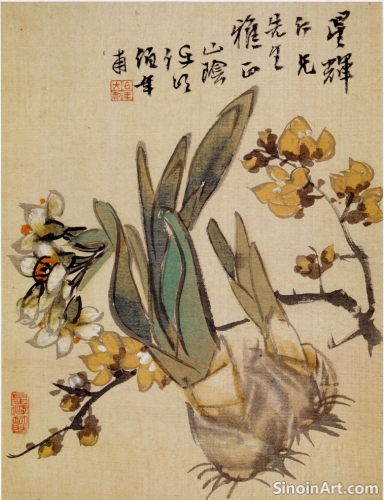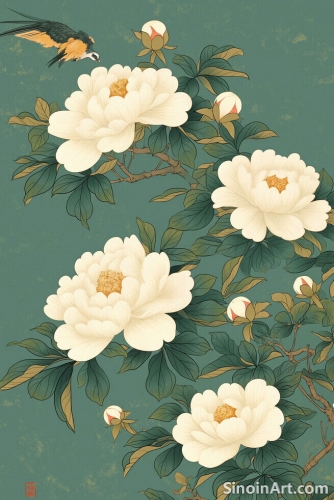The Evolution of Gongbi Subject Matter: From Tradition to Contemporary
|
While Gongbi painting is deeply rooted in tradition, its subject matter has evolved over time, reflecting changes in Chinese culture and society. From the detailed depictions of court life in earlier dynasties to the incorporation of contemporary themes in modern works, the subject matter of Gongbi continues to adapt and expand while still respecting its historical foundation.  Historically, Gongbi subject matter was often dictated by the imperial court and the ruling elite. Paintings often depicted scenes of court life, historical figures, and mythical narratives. These works served not only as artistic expressions but also as records of important events and cultural ideals. The careful rendering of these scenes reflected the social status and the values of the patrons.  The depiction of flora and fauna also played a significant role in traditional Gongbi subject matter. Flowers and birds were chosen for their symbolic meanings, as well as their natural beauty. These depictions were often based on keen observations of the natural world and reflected the Chinese cultural emphasis on harmony with nature. This subject has remained an important element of the art form.  During later dynasties, landscape painting also became a significant theme in Gongbi. These landscapes were often filled with meticulous details and conveyed a sense of peace and harmony. These paintings went beyond mere depictions of natural scenery and served as a way to engage with Chinese philosophical traditions. These works have both aesthetic and spiritual significance. In the modern era, Gongbi subject matter has expanded to incorporate contemporary themes and social commentary. Artists are using the meticulous detail and precision of Gongbi to address modern issues, from social injustice to environmental concerns. This infusion of modern concepts and perspectives has given new relevance and dynamism to the art form. The combination of traditional techniques and contemporary ideas has reinvigorated the art form. The evolution of Gongbi subject matter showcases the adaptability and enduring relevance of the art form. While respecting its historical legacy, contemporary artists are pushing the boundaries of what can be represented in this traditional style. This continued exploration and innovation ensures that Gongbi remains a vital and dynamic art form for both artists and audiences alike. |
Tag : Gongbi subject matter, Chinese art themes, evolution of painting, traditional vs contemporary art, art historical development
Related information
- Gongbi Painting and its Role in Cultural Diplomacy
- Gongbi Painting and the Use of Light and Shadow
- The Role of Line in Gongbi: Structure and Expression
- The Exquisite World of Gongbi: A Detailed Introduction
- The Use of Gilding and Metallic Pigments in Gongbi
This article explores the role of Gongbi painting in cultural diplomacy, highlighting its ability to foster cross-cultural understanding, promote artistic collaboration, and serve as a symbol of Chinese cultural identity on the global stage.
This article explores the subtle but skillful use of light and shadow in Gongbi painting, highlighting the use of color gradations, brushstrokes, and how these techniques contribute to creating a sense of depth, volume, atmosphere, and enhance the overall impact of the artwork.
This article focuses on the importance of line in Gongbi painting, detailing the "gougou" outlining method, the variation in line weight, and the use of lines to convey structure and expression in the artwork.
A comprehensive introduction to Gongbi painting, highlighting its detailed nature, historical significance, common subjects, and continued relevance.
This article explores the use of gilding and metallic pigments in Gongbi painting, highlighting how these elements add a sense of luxury, luminosity, and symbolic meaning, while also requiring a high degree of skill and precision in their application.